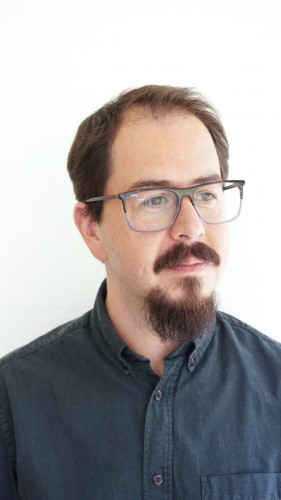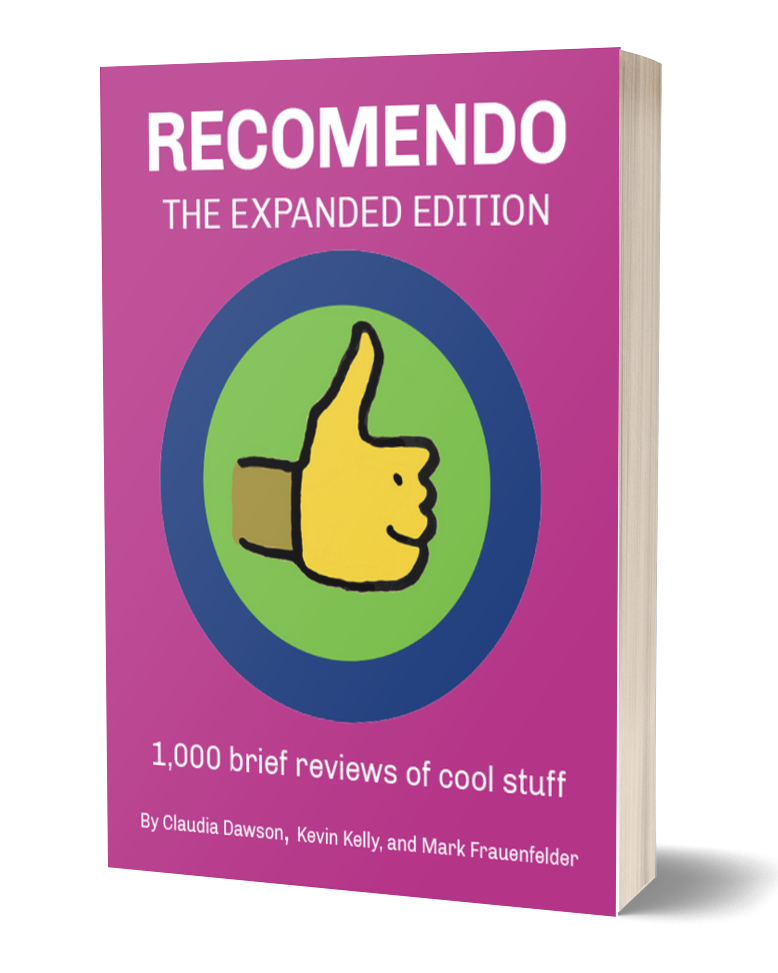Jorge Camacho, Strategic Designer

Cool Tools Show 290: Jorge Camacho
Our guest this week is Jorge Camacho. Jorge Camacho is a strategic designer, foresight strategist, and lecturer based in Mexico City. He’s a research affiliate at Institute for the Future, a co-founder of Diagonal — a design futures studio based in Mexico City — and a board member of Plurality University Network. You can find him as @j_camachor on Twitter and Medium.
Subscribe to the Cool Tools Show on iTunes | RSS | Transcript | See all the Cool Tools Show posts on a single page
Show notes:

Pocket (free, or $44.99 for the Premium Annual Membership)
I don’t think there’s any other tool — both digital and physical — that I use more than Pocket. Not only that, I don’t think there’s a lot of people that use Pocket more than me. I have proof! Every year, in December, they send a mailing campaign to their top users and there I’m always informed that I belong to the top 5% of Pocket readers. Last year I allegedly read more than 5 books on the platform. But perhaps I should qualify that. You see, Pocket was originally designed to save articles that you’d read later (in fact, it used to be called Read It Later). But very often I don’t read them later. I just save them. In this respect, I’m like a digital content hoarder. This is due to the nature of my work. As a foresight strategist or futurist, my work includes being constantly on the look or “scanning” for signals of change. This can take the form of actively-focused desk research for a specific project or just being constantly prepared for saving a scanning hit even when you’re just passively scrolling on Twitter. A few years back I discovered that Pocket was a great way to build a personal database of signals, articles and other types of content that I may need later for projects. There are two Pocket features that I find super useful. First, by installing the mobile app and desktop browser extensions, I can save links from almost anywhere. For example, if someone tweets an article that I want to save, I can just long-press the link on my iPhone and I will easily find the shortcut to save it on my Pocket account. The second feature is that on the save screen I can easily add tags like “signal”, “privacy”, “Mexico”, etc., that I will then use to browse my list whenever I want to find relevant content. More recently, I discovered the extended powers that you can get when you connect Pocket with other services using IFTTT. For example, I have set up multiple IFTTT applets to instantly add my Pocket saves to Google spreadsheets where I can share and manipulate them more easily. That’s how I know, for example, that over the year I’ve saved around 540 COVID-related articles (sigh) and around 790 potential signals of change. But it’s not just about the quantity of content that I hoard but about the qualitative connections that this tool allows me to discover. It’s my foundation for what a friend of mine, Tiago Forte, calls “building a second brain.”

Baby Taylor (BT1) travel guitar ($379)
This is one “toy” I bought to make the pandemic lockdown a bit more bearable. I’ve been playing the guitar since high school and, like others in my generation, I played in a couple of bands during college. We never got to release an album but we had a lot of gigs and recorded a few demos. In any case, a few months ago, to my surprise, my teenage son decided to pick up the guitar. I own a couple of electric guitars and amps but I don’t use them very often due to hassle of connecting it all. Sometimes you just want to literally pick up the guitar and play some riffs or a song in between doing other things. Every month or so I travel with my family to a country house near to Mexico City and while I’ve packed one of my guitars and amp before, it’s really not that convenient. For all these reasons, back in September I decided to get one of these small travel guitars. Taylor has good distribution in Mexico and, after doing some research, I learned that the BT1 is one of the most popular in the category. I thought it was going to feel more like a toy but it really doesn’t. It plays and sounds great — much louder than I thought it would sound. Not only is it a great travel instrument but also a perfect everyday distraction. I keep it close all the time to fool around in between meetings and to have more proper sessions where I learn new songs or come up with my own ideas. Perhaps the only downside is that my family has to bear with my singing now and then.

Mezcalero glass from Mexican designer José de la O ($65 for a set of four)
During the pandemic, I’ve really become more of an aficionado of spirits — mostly whisk(e)y and “agaves” (i.e. mezcal, tequila, etc.) I really don’t drink that much and don’t drink everyday. It’s more that when I have a drink, I want to have something special and really enjoy it, unpack it, etc. I’m always amazed at how much of that enjoyment comes from the nose and thus the importance of a good nosing/tasting glass. Glencairn glasses are the standard not just for whisky but also for tasting spirits in general. But there are now some cool designs specifically for tasting agave spirits, like the Mezcalero glass from Mexican designer José de la O. I recommend having sets of two or four as its always interesting to pour two or three at a time to compare different “expressions”.

Austerity Ecology & the Collapse-porn Addicts: A defence of growth, progress, industry and stuff, by Leigh Phillips ($6, Kindle ebook)
With chapter titles such as “The Apocalypse Is Bigger than Justin Bieber”, “The Great Primordial Flatulence of Doom”, and “Locally-Woven Organic Carrot-Pants” among others just as witty and controversial, this was the book that woke me up from my dogmatic slumber — that is, from the anti-modernist guilt trip that one can develop from learning about the current planetary crisis. Whereas a lot of recent environmentalism seems to rest on the conviction that in order to solve this crisis we need to “undo” things (and almost repent for our sins), Leigh Phillips (along with the so-called “ecomodernists”) show a way forward that is more about doing differently than about undoing. As he writes, “Our best hope is for humans to keep getting happier, healthier, and yes, wealthier—but also more equal.” So he calls for a pro-industrial, pro-growth, properly modern response. The book’s arguments are not perfect. I still think that other environmentalist positions (such as degrowth) offer important perspectives on the crisis. But Leigh’s book has been an important contribution to form the idea that there is not one but multiple ways forward, including some that involve more and not less technology and wealth.
About Jorge’s projects:
About a year ago I started this research project called “Preferable Worlds” (you can read the preface here). It’s something in the way of a book but presented as a Medium publication where I’ll be posting different articles/chapters and other types of content. The idea is simple although not necessarily aimed at a general audience. After about 250+ years moving through the so-called “great acceleration” we are now, so to speak, living in a cliffhanger. What comes now? There are multiple possible responses coming from various scientific fields which can actually be mapped to Jim Dator’s “four futures”: Growth, Collapse, Discipline and Transformation. In this way, you have people like Mariana Mazzucato and Carlota Pérez calling for new forms of green sustainable and inclusive growth. But also people like Raphaël Stevens and Pablo Servigne calling for a “collapsologie”. The degrowth movement, which maps well with Dator’s original idea of discipline or constraint. And, finally, people like Benjamin Bratton exploring “Terraforming” or the completely artificial transformation of the planet through geoengineering as the only solution. Given that I work as a designer, in the publication I’m exploring the implications of these potential responses for design practices. Along with the publication, I’m running co-creation workshops such as the one I facilitated at the PRIMER conference.
Another related project — and the one that has prevented me from writing and publishing more often — is an exhibition I’m curating for Espacio Telefónica in Madrid which will open in October. The exhibition is called “La Gran Imaginación” (“The Great Imagination”), to establish a historical parallel with “the great acceleration”, and tracks the historical explosion of futures imagination from the 18th century onwards. It will present a collection of images of the future in different media (books, movies, design artifacts, etc.) and four newly commissioned installations associated with the four futures described above. For these, I invited collaborations between leading thinkers such as Carlota Pérez or Raphaël Stevens with leading design futurists such as NORMALS from Berlin or Jake Dunagan and Jacques Barcia from IFTF. I’m excited about how it’s turning up and I believe it will be an important contribution to discussions around the crisis we’re living through and possible responses.
08/6/21








